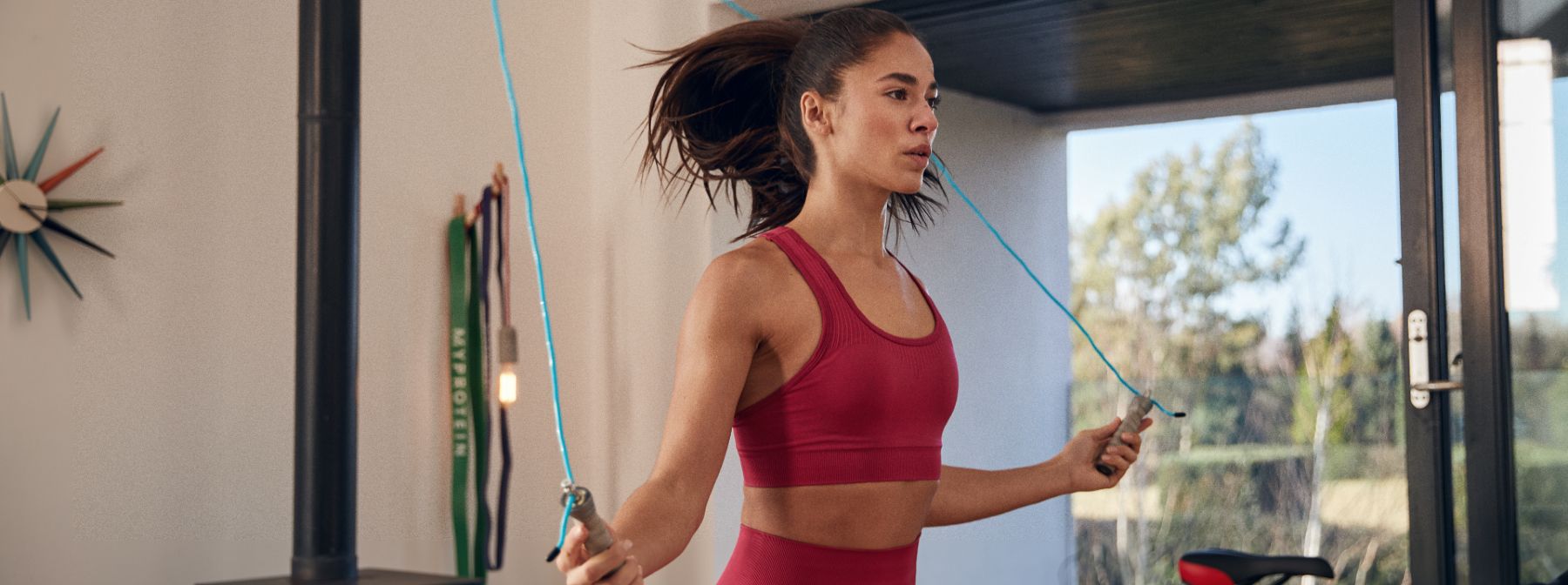Motivation: Is that all it takes?

Ask anyone in the fitness industry whether they're an athlete, personal trainer, or instructor, and they'll likely tell you that one of the most frequently asked questions they get is "how do you stay motivated?"
It's normal for people to feel fully motivated in the new year, only that motivation often doesn't last long. New year's resolutions can set high expectations that are hard to maintain.
Motivation is a word that's often thrown around when it comes to starting or sticking to a health and fitness routine. While it's important, it's often treated with too much importance. Here, we'll explain what it means to be motivated and how to keep going when motivation wanes.
It’s good to be motivated, but you won’t always feel that way
First off, let's remember that we're only human. It's completely normal to not always feel motivated. Everyone, from newbies to pro athletes, goes through this. No one is motivated 100% of the time.
A good way to make the most of your motivation is by understanding what drives you and why.
Types of Motivation
When it comes to understanding motivation, it's important to think about why you want to do something in the first place. Motivation can come from both external and internal factors.
Extrinsic Motivation
One type of motivation is extrinsic motivation, which is driven by rewards. This type of motivation is one of the main motivators when it comes to fitness. It’s usually an external reward, like a medal or trophy for competing in a sport, or fitting into an old pair of jeans. But it doesn't always have to be a physical thing.
While extrinsic motivation can be great for getting started with fitness, it's not always sustainable in the long term. You may work out to get the reward, but not because you enjoy it. And, if this reward doesn’t come quickly, it’s all too easy to give up.
Intrinsic Motivation
Another type of motivation is intrinsic motivation. This is the internal drive to achieve a goal because of the feelings or emotions attached to it.
You know that feeling of euphoria you get after a killer workout or reaching a personal best? That's intrinsic motivation in action. It's the instant gratification from hard work.
These good vibes are powerful reminders to keep pushing ourselves and tend to lead to a more sustainable, long-term relationship with our goals. It's not always there, but it's a great way to stay motivated.
Which Motivation Is Better?
Blending both forms of motivation helps you stay on track and makes it easier to stay motivated. But that doesn’t mean that you’ll never lack motivation again — it’s natural. Those moments are when individuals who still hit their workout have other tools in their back pocket to keep them focused and showing up.
It depends on the individual. Some people thrive on external motivation, like a workout buddy or a personal trainer, while others find that internal motivation, like setting a personal goal or creating a vision board, works best for them.
But here's the thing: both forms of motivation can be useful. Mixing them together can help keep you on track and make it easier to stay motivated. But remember that everyone has their off days and it's totally normal to lack motivation sometimes. That's when having other tools in your toolkit can come in handy to keep you focused and showing up.

Shop The Look
So, what are these tools?
Motivation comes and goes, so it’s a good idea to have plans in place to ensure you stay committed, consistent, and disciplined on these days.
Building these pillars can take time and it's totally normal to take a step back or start over at different points. But there are a few practical tips that can help you overcome the obstacles that hold you back when motivation is low.
6 tips to keep on track without motivation
Set SMART goals and be realistic
Setting SMART goals is a good idea if you want to stay on track with motivation. Motivation is high when you first start, but if you want to maintain motivation, you need to be honest about your goal.
Using the SMART framework, you can make sure your goals are specific, realistic, and tailored to your lifestyle. Breaking your goals down into short-term, mid-term, and long-term timeframes can also help you stay on track.
For example, if your goal is to get stronger, setting specific goals like squatting, deadlifting, or lifting a target weight is better than an unspecified goal. Plus, having a detailed time plan with mini-wins along the way will keep you motivated in the long run.
And don't forget, sometimes life gets in the way. The great thing about SMART goals is that they're easily adaptable to reflect your changing needs.
Find out more about SMART goals here:
Plan a routine and build consistency
Now that you've set your goals and have a plan in place to reach them, it's time to focus on the details. Take some time to plan out your training schedule, including the classes or sessions you want to attend and the exercises and equipment you'll need to achieve your goals.
Be realistic about when and where you'll train, and don't be afraid to ask for advice if you need it. Do some research online to find the training style that works best for you, and consider talking to personal trainers or coaches who specialise in your specific goals.
And most importantly, make sure you choose activities and environments that you enjoy and feel comfortable in. This will help you stay committed and consistent, and before you know it, you'll be hitting those goals!
Remove barriers that may stop you
We're all guilty of coming up with excuses for why we haven't done something or why we've dropped off a programme, so it's important to identify and eliminate any potential barriers before we even start. We all have different budgets, busy schedules, and a variety of responsibilities that take priority. But, if we take the time to acknowledge these and plan around them, we're more likely to succeed.
Gym memberships can be pricey, but that doesn't mean you can't work out at all. There are plenty of home workouts you can do, with or without equipment. Take advantage of class-based deals or free trials, or even just get outside for a walk, run, or bike ride. There's always a way to incorporate exercise into your routine, even without a gym.
Try this one:
Is time your main obstacle? Keep in mind that workouts don't have to be hours long. As they say, "work smarter, not harder”. You can get an effective workout in just 20-30 minutes, 3-4 times a week. This means you can be in and out of the gym in an hour and still have time to grab a coffee before work.
Be honest with yourself about what you think your barriers will be and plan how to overcome them. Set aside some time on a Sunday to look at your calendar and create a schedule for the week. This will help you stay on track and build discipline and commitment.

Shop The Look
Take your time to introduce exercise and recover
When it comes to starting an exercise routine, it's important to ease into it and not go full throttle right away. Gradually increasing your activity level and focusing on sustainability will help prevent burnout and injuries.
And don't forget, recovery is just as important as the exercise itself. Incorporating rest days and potentially taking a de-load week will give your mind and body a chance to recoup before hitting your next workout.
Also, don't be afraid to make changes or adjustments to your plan. If you find that something isn't working for you, it's OK to switch things up. Give yourself time to figure out what works best for you and your body.
Remind yourself daily of achievements and goals
Positive reinforcement is a powerful tool that can help you stay motivated and on track. Whether it's celebrating small wins, trying something new, sticking to your plan for a week, or simply reminding yourself of the good feeling you get after completing a task, these positive reinforcements can help you stay consistent and build a disciplined pattern of behaviour.
One way to use positive reinforcement is to build in visual cues that remind you of your goals. Seeing pictures, quotes, or words related to your goal every day can help create strong memories and keep you focused. Try putting these visual cues on your fridge, phone wallpaper, or computer desktop so you can see them regularly.
Another tip is to write down what you're proud of yourself for at the end of each day. This can help you reflect on your progress and stay motivated.
Join forces with a friend or find your tribe
Remember, you don't have to tackle your fitness goals alone. Having someone by your side can make the journey more enjoyable, inspire you to push harder, and keep you accountable. Whether it's a friend, neighbor, or family member, training with someone can add a fun, competitive edge to your workouts.
You don't have to limit yourself to just people you already know. The health and fitness community is more connected than ever, so why not use this as an opportunity to meet new people? Take a moment to think about what initially motivated you to start your fitness journey and how a training partner or community could help you achieve those goals.
And when things get tough, remember that support systems are there to lift you up and make sure you show up. Everyone needs a little extra push every now and then, so don't be afraid to reach out for help.
Take home message
Motivation is great and something we all need, but when looking to accomplish real-life changes, hit long-term goals, or really commit, we tend to need more than motivation to be successful.
It's important to remember that motivation comes and goes, and not every day will be easy. There will be some bumps along the way in your journey, but that's OK. Being patient with yourself, resetting if you need to, and adjusting is key to long-term life changes. You've got this!
Need some more motivation?
READ THESE NEXT:















